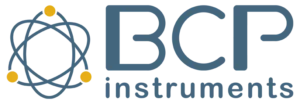Mass-labelled chlorinated biphenyls
Our range of individual standards for mass-labelled chlorinated biphenyls (PCB 13C), for your environmental analyses.Trust BCP Instruments for all your analytical standards needs and benefit from the excellence of Wellington Laboratories products in France and Belgium.
Home | Wellington AnalyticalStandards | PCB | Individual 13C-PCB Solutions
Our mass-labelled PCB analytical standards
Reference materials for PCBs (Polychlorinated biphenyls) are developed by Wellington Laboratories. They are certified standard solutions containing a single PCB congener.
This range of individual solutions covers a very large number of congeners, including:
- Mono- to decachlorinated PCBs: ranging from PCB 1 (mono-chlorinated) to PCB 209 (decachlorinated).
- The 12 dioxin-like PCBs of toxicological interest: PCB 77, 81, 105, 114, 118, 123, 126, 156, 157, 167, 169, 189.
These individual solutions are used for:
- Create customised mixtures according to specific analytical needs.
- Isolate interference or analytical behaviour from a single congener.
- Perform purity, linearity or instrumental response tests.
All our CRMs are available in 1.2 mL solutions in nonane and are ISO 9001, ISO/IEC 17025 and ISO 17034 certified.
Mass-labelled chlorinated biphenyls (PCB 13C)
Our commitments
Haute précision
Ces solutions innovantes permettent une identification et une quantification fiables des composés cibles grâce à leur pureté exceptionnelle et à leur compatibilité optimale avec les protocoles analytiques.
Conçus pour répondre aux exigences rigoureuses des laboratoires, nos standards de référence offrent une performance analytique inégalée, assurant ainsi des résultats reproductibles et conformes aux standards réglementaires les plus stricts. Avec les produits Wellington, vous bénéficiez d’outils de référence pour mener des analyses environnementales de pointe.
Fiabilité certifiée
Chaque lot est accompagné d’un certificat d’analyse détaillé, attestant de la qualité et de la pureté des composés.
Livraison rapide
France et Belgique.
Do you have a question? Contact us using the contact form. We will be delighted to advise you.
13C-labelled chlorinated biphenyls individual solutions
Biphényles chlorés marqués
Solutions individuelles marquées 13C de PCBs
1.2 mL x 50ug/mL, nonane
| Catalogue No. | Description | CAS |
|---|---|---|
| MBP-1 | 2-Chloro(13C12)biphenyl | 234432-85-0 |
| MBP-3 | 4-Chloro(13C12)biphenyl | 208263-77-8 |
| MBP-4 | 2,2'-Dichloro(13C12)biphenyl | 234432-86-1 |
| MBP-5 | 2,3-Dichloro(13C12)biphenyl | N/A |
| MBP-8 | 2,4'-Dichloro(13C12)biphenyl | N/A |
| MBP-9 | 2,5-Dichloro(13C12)biphenyl | 250694-89-4 |
| MBP-11 | 3,3'-Dichloro(13C12)biphenyl | N/A |
| MBP-15 | 4,4'-Dichloro(13C12)biphenyl | 208263-67-6 |
| MBP-19 | 2,2',6-Trichloro(13C12)biphenyl | 234432-87-2 |
| MBP-28 | 2,4,4'-Trichloro(13C12)biphenyl | 208263-76-7 |
| MBP-31 | 2,4',5-Trichloro(13C12)biphenyl | 208263-78-9 |
| MBP-37 | 3,4,4'-Trichloro(13C12)biphenyl | 208263-79-0 |
| MBP-52 | 2,2',5,5'-Tetrachloro(13C12)biphenyl | 208263-80-3 |
| MBP-54 | 2,2',6,6'-Tetrachloro(13C12)biphenyl | 234432-88-3 |
| MBP-60 | 2,3,4,4'-Tetrachloro(13C12)biphenyl | N/A |
| MBP-70 | 2,3',4',5-Tetrachloro(13C12)biphenyl | 208263-81-4 |
| MBP-77 | 3,3',4,4'-Tetrachloro(13C12)biphenyl | 105600-23-5 |
| MBP-79 | 3,3',4,5'-Tetrachloro(13C12)biphenyl | 1027415-81-1 |
| MBP-81 | 3,4,4',5-Tetrachloro(13C12)biphenyl | 208461-24-9 |
| MBP-95 | 2,2',3,5',6-Pentachloro(13C12)biphenyl | N/A |
| MBP-101 | 2,2',4,5,5'-Pentachloro(13C12)biphenyl | 104130-39-4 |
| MBP-104 | 2,2',4,6,6'-Pentachloro(13C12)biphenyl | 234432-89-4 |
| MBP-105 | 2,3,3',4,4'-Pentachloro(13C12)biphenyl | 208263-62-1 |
| MBP-111 | 2,3,3',5,5'-Pentachloro(13C12)biphenyl | 235416-29-2 |
| MBP-114 | 2,3,4,4',5-Pentachloro(13C12)biphenyl | 208263-63-2 |
| MBP-118 | 2,3',4,4',5-Pentachloro(13C12)biphenyl | 104130-40-7 |
| MBP-123 | 2',3,4,4',5-Pentachloro(13C12)biphenyl | 208263-64-3 |
| MBP-126 | 3,3',4,4',5-Pentachloro(13C12)biphenyl | 208263-65-4 |
| MBP-127 | 3,3',4,5,5'-Pentachloro(13C12)biphenyl | N/A |
| MBP-133 | 2,2',3,3',5,5'-Hexachloro(13C12)biphenyl | N/A |
| MBP-138 | 2,2',3,4,4',5'-Hexachloro(13C12)biphenyl | 208263-66-5 |
| MBP-153 | 2,2',4,4',5,5'-Hexachloro(13C12)biphenyl | 185376-58-3 |
| MBP-155 | 2,2',4,4',6,6'-Hexachloro(13C12)biphenyl | 234432-90-7 |
| MBP-156 | 2,3,3',4,4',5-Hexachloro(13C12)biphenyl | 208263-68-7 |
| MBP-157 | 2,3,3',4,4',5'-Hexachloro(13C12)biphenyl | 235416-30-5 |
| MBP-159 | 2,3,3',4,5,5'-Hexachloro(13C12)biphenyl | N/A |
| MBP-162 | 2,3,3',4',5,5'-Hexachloro(13C12)biphenyl | N/A |
| MBP-167 | 2,3',4,4',5,5'-Hexachloro(13C12)biphenyl | 208263-69-8 |
| MBP-169 | 3,3',4,4',5,5'-Hexachloro(13C12)biphenyl | 208263-70-1 |
| MBP-170 | 2,2',3,3',4,4',5-Heptachloro(13C12)biphenyl | 160901-80-4 |
| MBP-178 | 2,2',3,3',5,5',6-Heptachloro(13C12)biphenyl | 232919-67-4 |
| MBP-180 | 2,2',3,4,4',5,5'-Heptachloro(13C12)biphenyl | 160901-82-6 |
| MBP-188 | 2,2',3,4',5,6,6'-Heptachloro(13C12)biphenyl | 234432-91-8 |
| MBP-189 | 2,3,3',4,4',5,5'-Heptachloro(13C12)biphenyl | 208263-73-4 |
| MBP-194 | 2,2',3,3',4,4',5,5'-Octachloro(13C12)biphenyl | 208263-74-5 |
| MBP-202 | 2,2',3,3',5,5',6,6'-Octachloro(13C12)biphenyl | 105600-26-8 |
| MBP-205 | 2,3,3',4,4',5,5',6-Octachloro(13C12)biphenyl | 234446-64-1 |
| MBP-206 | 2,2',3,3',4,4',5,5',6-Nonachloro(13C12)biphenyl | 208263-75-6 |
| MBP-208 | 2,2',3,3',4,5,5',6,6'-Nonachloro(13C12)biphenyl | 234432-92-9 |
| MBP-209 | Decachloro(13C12)biphenyl | 105600-27-9 |
N/A: not applicable
Do you have a question? Contact us using the contact form. We will be delighted to advise you.
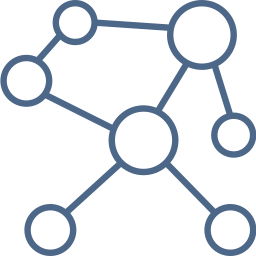
PFAS, per- polyfluoroalkyl Substances
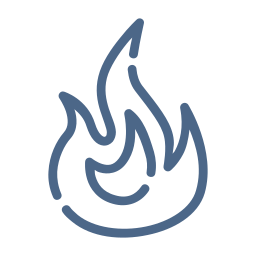
Halogenated flame retardants, HFRs and other compounds
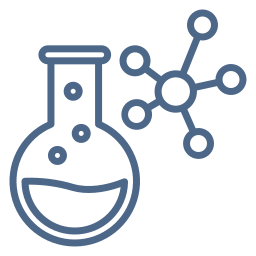
Polychlorinated biphenyls, PCBs
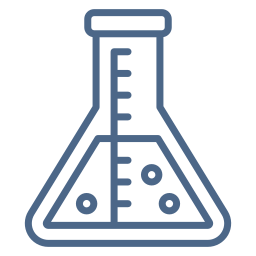
Polybrominated diphenyl ethers, PBDEs Polybrominated biphenyls, PBBs

Dioxins, Furans, PCDDs, PCDFs

Organochlorine Pesticides, OCP

Certified reference materials

Other reagents
Find out more about PCBs
Persistent organic pollutants (POPs)
Polychlorinated biphenyls (PCBs) are persistent organic pollutants (POPs). They have been widely used in insulating oils, plasticisers and paints, but are now banned in many countries, particularly in Europe, because of their:
- High toxicity (some are carcinogenic, neurotoxic, endocrine disruptors ).
- Bioaccumulation in the fatty tissues of living organisms.
- Persistence in the environment (soil, sediment, biota) over several decades.
- Long-distance transport (they can even be found in the Arctic).
Monitoring
This is why PCBs are monitored in many contexts:
- Water, soil and sediment,
- Food products (fish, milk, meat),
- Human biological samples (blood, breast milk),
- Contaminated waste (transformers, used oils).
Finally, PCBs exist in 209 different forms (congeners), depending on the number and position of the chlorine atoms. This makes their analysis extremely complex. Hence the importance of reliable standards. The use of internal standards (PCB 13C) makes it possible to correct for losses during extraction and purification, and to improve the accuracy of the final quantification.
Do you need laboratory equipment and/or consumables?
Feel free to contact us at any time.
